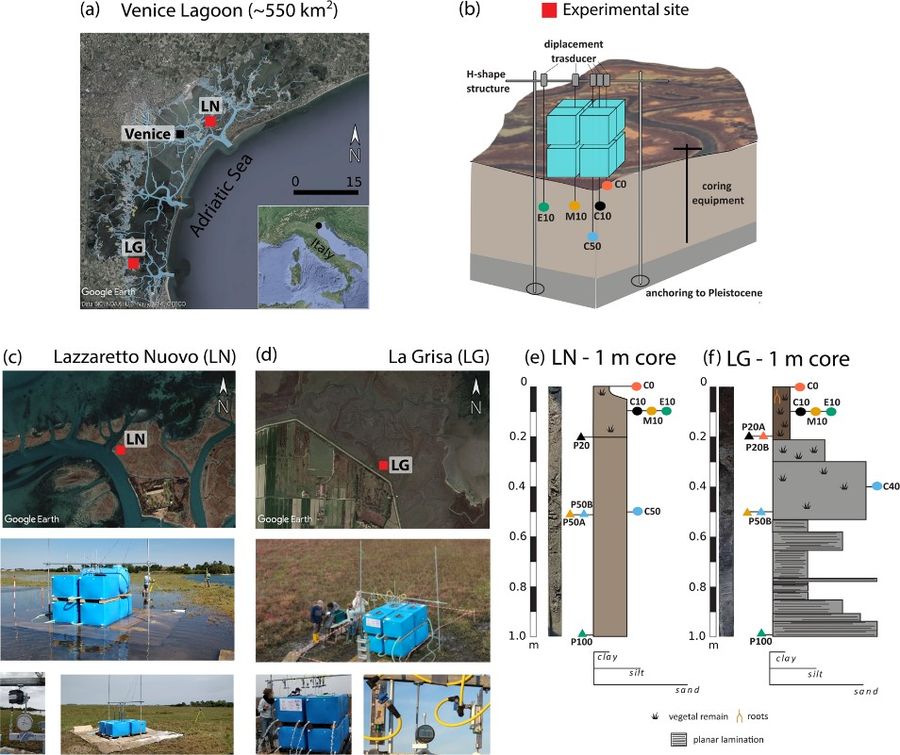Published in Communication Earth & Environment the results of in-situ loading experiments in the Venice lagoon
Published in Communication Earth & Environment the results of in-situ loading experiments in the Venice lagoon revealing that autocompaction of coastal marshes is strongly influenced by soil characteristics and heterogeneity.
Over the past decades coastal marshes around the world have declined dramatically. Their deterioration is controlled by scarcity of sediments, erosion, and accelerated rise of relative sea-level. The feedbacks between these processes control marsh evolution and determine their long-term survival. Aggradation of a marsh to keep pace with relative sea-level rise mainly depends on the interplay between sedimentation and natural compaction (also referred to as autocompaction) of shallow, recently deposited, unconsolidated sediments.
Researchers from University of Padova (ICEA), National Research Council of Italy (IGG and ISMAR), Wageningen University, and Deltares Research Institute published a new study on the results of two in-situ loading experiments aimed to provide new knowledge on how the subsurface affects coastal marsh survival.
For the first time, saltmarsh compaction was monitored in undisturbed field conditions under a controlled force of stress (similar to a lab test) overcoming the problem linked to the lateral and vertical heterogeneities (e.g., those related to plant roots).
The large differences in behavior and maximum compaction between inorganic and organic soil-dominated saltmarshes (6 vs 32 mm) highlight the crucial role of autocompaction and soil heterogeneities when predicting the fate of coastal marshes worldwide.
Bibliographic reference
For further information: Luigi Tosi (CNR-IGG, luigi.tosi(at)igg.cnr.it)
